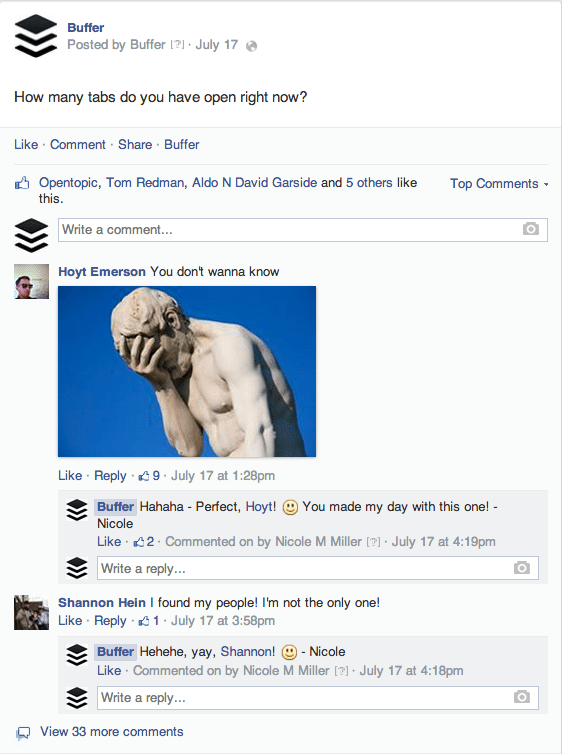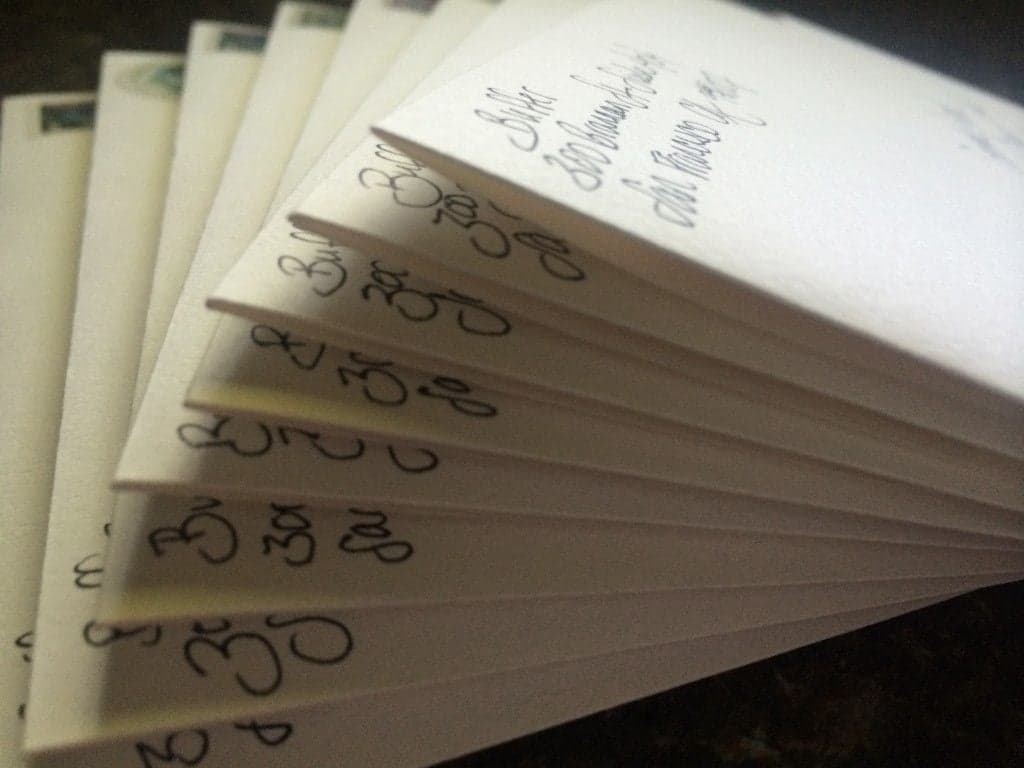A question I hear from time to time when I introduce myself and my title here at Buffer is, “What is a community champion?”
Well, that’s a great question!
My immediate response is, “I send out love to our customers all day.” But it’s so much more than that.
The typical community manager role (though this role truly varies from company to company) often includes social media management and engagement, content marketing and networking and connecting with customers. At smaller companies, the community manager can end up doing lots of other tasks, too.
The community champion role at Buffer is unique compared to many other community managers, because a lot of the social media posting and management is shared amongst the whole team at Buffer. Our engineers and product team even jump on Twitter to interact with customers and answer questions. It’s a priority for us to all be involved and connected to the customers.
So as the community champion, my goal is to go one step further to show our amazing community love from Buffer.

The tools of the trade
My tool of choice is pen and paper. I love to send hand-written thank you notes with some of our amazing Buffer stickers (printed by Sticker Mule) to customers.
There’s no one tried-and-true method for discovering all the awesome people who deserve these notes and stickers. It varies from someone asking on Twitter to one of our Happiness Heroes noticing a customer needs some extra love or a thank-you after dealing with a bug or technical issue.
I’ll even monitor blog comments of Buffer fans and reach out to them via Twitter or email. We want our customers to know we are listening and we value them — all of them. :)
We’ve had such amazing responses to these notes.
Received a sweet handwritten note and @buffer stickers from @nmillerbooks today! (@KittyCatKismet loves them too) pic.twitter.com/2M6GANSyIm
— Tessa Greenleaf (@TessaGreenleaf) July 10, 2014@buffer @nmillerbooks The stickers are great, but the hand written note is what makes you guys special! #brandloyalty pic.twitter.com/worNSi0E96 — Chris Leiper (@LeiperChris) July 1, 2014
Yeah @Buffer rocks in so many ways!! Thanks @nmillerbooks and team for the nice letter, shirt and stickers!! pic.twitter.com/2AlAOriNno
— Brian Fanzo (@iSocialFanz) June 19, 2014In addition to stickers, we also love to share our Buffer T-shirts. They’re printed by Jakprints and are quite legendary for their silky softness. :)
Thx again @nmillerbooks for the @buffer shirt and stickers. My son won’t take it off. Oh well. He says it feels like silk. #DivaChild — David French (@DMCrandall) June 2, 2014
We’ve been delighted to discover that the hand-written note seems to have more impact than any sort of gift we send. It’s a joy for me to connect with people one-on-one and get a chance to brighten their day.
Online outreaches
Another area of focus for me is finding new ways to reach Buffer’s community online. We’ve started a weekly Twitter chat, #bufferchat, that reaches hundreds of participants and results in nearly 2,000 tweets in an hour. We chat about all things social media and productivity. I’m constantly amazed at how much I’m learning from our community.
We’ve had several guests join the chat and expose new tools to our audience. This has been amazing to see our network grow and expand. From talking about the power of visuals in social media with Canva’s Head of Social Strategy, Peg Fitzpatrick, to talking about Youtility Marketing with Jay Baer to idea generation with Buffer’s Head of Content Marketing, Courtney Seiter, each chat is a powerhouse of information and networking.
Our Google+ community page for #bufferchat has become a good gathering place in between the chats and a good place to post recaps and Storify curations of the chats. This has grown steadily and it’s a great way to interact across several networks. I’d love to see you at a future Bufferchat and in our Google+ community!
Social media conversations
On social media, I have the pleasure of narrowly focusing on engagement—and more than just a like or favorite. I love conversations and want to know more about our audience, even down to the pets they own (and what their latest escapades are). For instance, Annie and her sweet dog, Lacey (AKA “Spazette”) are well known by the whole Buffer team.
@buffer: thanks for a great #bufferchat today! It took a lot of convincing, but Spazette behaved thanks to your gift: pic.twitter.com/hJ5DlUckma
— Annaliese Henwood (@MktgInnovator) July 23, 2014To get to know our audience better, I post a question of the day on Facebook, generally related to business, productivity or social media. Sometimes, we get some really intense conversations going. And sometimes it’s a fun random one, like “How many tabs do you have open right now?”

This sense of connection out in the vastness of the internet seems to bring the community so much closer. We’ve started these conversations on LinkedIn and Google+ as well. It’s so amazing to see a core group of community members emerge as they comment routinely.
Buffer hangouts – in real life
Chicago! Manchester! Paris! We’ve had several amazing opportunities to gather Buffer fans in real life–with the help of many different Buffer team members coordinating and hosting in various locations.
My role in these hangouts has been to organize some of the nitty-gritty details and then help spread the word.
Our Chicago and Paris were informal, coffee and pastries on Buffer sort of meetups but our UK hangout had the privilege of our CEO, Joel, joining in via Google Hangout to share more about Buffer’s story.
Hangout with @joelgascoigne underway #bufferMCR pic.twitter.com/wkSAAQJHDW
— TechHub Manchester (@TechHubManc) June 8, 2014We definitely hope to do more of these gatherings. Where should we gather next?
What’s ahead for the Buffer community?
I’d love to grow and expand in all these areas—bigger and better #bufferchats, more in-real-life hangouts, deeper social media conversations. And of course, who really knows what the future holds? Google Hangouts with the team? Buffer conferences, maybe?
Our vision is to connect and network amongst the Buffer community and the Buffer team and build a deeper family tie amongst one and all. We know Buffer is special and a huge part of that is the incredible community of users and supporters.
Have you had a chance to interact with the Buffer community via a #Bufferchat, Facebook conversation or another channel? What are some other ways you’d like to connect with us at Buffer or with the Buffer community? I’d love to hear from you in the comments!
Try Buffer for free
190,000+ creators, small businesses, and marketers use Buffer to grow their audiences every month.




